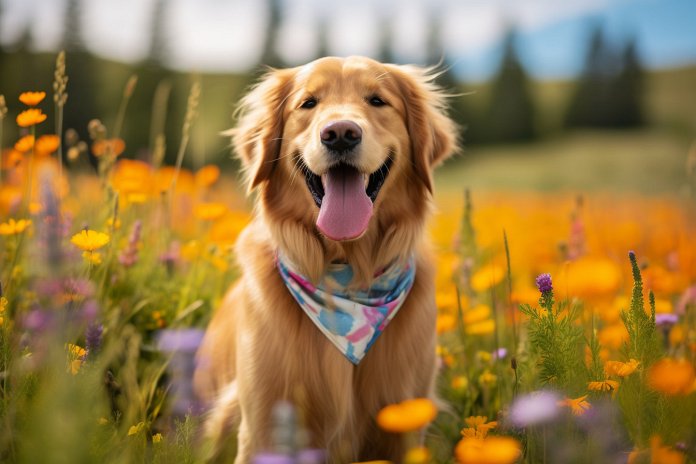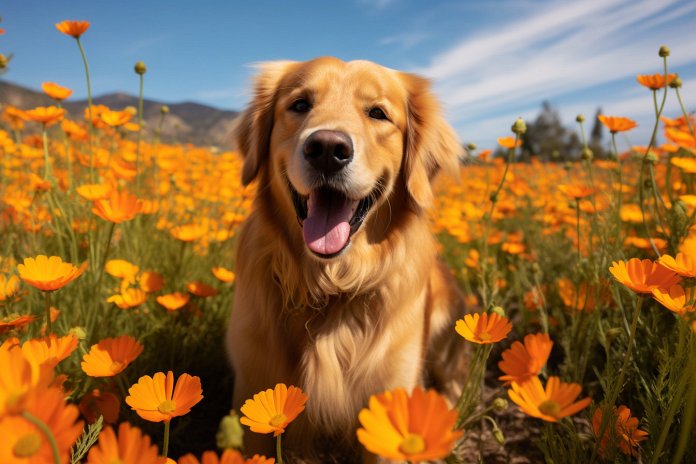
Hope is an important part of the human experience, but can dogs feel hope too? While our understanding of canine psychology is still evolving, there is evidence to suggest that dogs can experience distinct emotions. However, the nuanced feeling of hope might be outside of their abilities. In this article, we’ll explore the behaviors that dogs might display when they are feeling hopeful or optimistic, the historical and scientific context, and relevant training techniques. Let’s dive in!
Signs of Dogs Feeling Hope
While dogs may not display unique behaviors that indicate hope, there are signs that they are excited about something they suspect is going to happen, such as going for a walk or being fed. For example, when a dog sees their owner putting on their shoes or grabbing their leash, they may start to show signs of excitement and joy, like wagging their tail and jumping up. Additionally, dogs may vocalize their excitement through barking, whining, or howling.
Dogs may also exhibit signs of excitement and anticipation when they anticipate their humans coming home or when they sense that it’s time for their meal. They may go to the front door, paw at it, or wait near where their food or treats are kept. While these behaviors are usually harmless, they may need correction if they become disruptive or if the dog shows signs of distress or separation anxiety.
Body Language
Some signs that a dog is feeling hopeful include barking, howling, wagging their tail, and other signs of excitement. They may also react to cues from their owner, stand eagerly by the door or window, and wait near where their food or treats are kept.
History of Dogs Feeling Hope
Early analysis of canine behavior by French Philosopher René Descartes concluded that dogs were essentially emotionless machines. However, over time, the scientific community has discovered that dogs have similar brain structures and emotional pathways to humans. While it is still uncertain if dogs can specifically feel hope, there is anecdotal evidence that they can anticipate things in the short-term, such as going for a walk or having dinner.
Science of Dogs Feeling Hope
Research has shown that dogs and humans share the same infrastructure when it comes to emotion. Dogs have neurotransmitters and hormones that allow them to experience emotions and send messages to their brain. While dogs may not have the same understanding of time as humans, they can recognize daily patterns and expect certain events to happen again.
Training of Dogs Feeling Hope
It is not possible to train dogs specifically to feel hope. However, if a dog’s anticipation behavior becomes disruptive, there are ways to manage it. Ignoring the behavior and not reinforcing it by giving in to their demands is the first step. Instead, command the dog to sit down and reward them when they comply. Eventually, you should be able to manage the behavior without treats, simply by pointing to the ground.
Conclusion
While dogs may not experience hope in the same way humans do, they can exhibit signs of excitement and anticipation. Understanding these behaviors and managing them appropriately can help create a harmonious relationship between dogs and their owners.
Dogs may not have the same understanding of hope as humans, but they can anticipate and display excitement for certain events or activities.

Tips & Things to Know
1️⃣ Dogs may not experience hope in the same way humans do, but they can anticipate and get excited about certain events, such as going for a walk or being fed. Look for signs of excitement and joy, like wagging tail, jumping up, barking, and pacing.
2️⃣ Dogs have the ability to recognize patterns and anticipate daily events, like when their humans are due home or when it’s mealtime. They may exhibit behaviors such as waiting by the door, pawing at it, or howling until their expectation is met.
3️⃣ While you can’t train dogs to specifically feel hope, you can manage their behavior when they become disruptive due to anticipation. Ignore the misbehavior, command them to sit down, and reward them when they comply. Eventually, they will learn to manage their excitement without needing treats.
Frequently Asked Questions, Answered ✅
1. Can dogs feel hope?
– While dogs may not experience hope in the same way humans do, there is evidence to suggest that they can anticipate certain events and display signs of excitement or anticipation.
2. What are some signs that a dog is feeling hopeful?
– Signs of hope in dogs can include wagging their tail, jumping up, barking, whining, pacing, and waiting eagerly by the door or window.
3. How does a dog anticipate going for a walk?
– Dogs may anticipate going for a walk based on cues from their owner, such as putting on shoes, zipping up a coat, or grabbing the leash. They may show signs of excitement and joy, wagging their tail and jumping up.
4. Can dogs anticipate being fed?
– Yes, dogs can anticipate being fed and may display signs of excitement, such as going to their usual feeding spot, pacing around, and whining. They may also come to find their owner, jump up, and howl if they suspect the owner is taking too long.
5. Can dogs be trained to manage their anticipation and avoid disruptive behavior?
– While it may not be possible to train dogs specifically to feel hope, it is possible to manage disruptive behavior caused by anticipation. Ignoring the behavior, commanding the dog to sit, and rewarding compliance can help manage and redirect their behavior. Eventually, the behavior can be managed without treats, using simple commands.